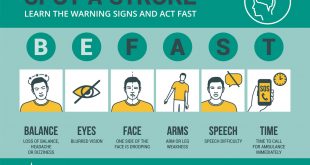By Steven Reichbach, MD
Each year about 30,000 new cases of Lyme disease are reported. According to the CDC, other methods of tracking suggest that number is actually closer to 476,000 diagnoses each year. Lyme disease is a debilitating disorder. Neuropathic pain syndromes are the root cause of many individuals’ chronic discomfort. Neuropathic pain syndromes are related to many disorders including Lyme disease.
Lyme Disease
The initial symptoms of Lyme are flu-like symptoms, joint pain, muscle weakness and brain fog. Lyme disease can cause significant disorders including neurodegenerative effects. If Lyme disease isn’t promptly or effectively treated in the first two stages, late disseminated Lyme occurs weeks, months or even years after the tick bite. The Lyme bacteria have spread throughout the body and many patients develop depression, chronic arthritis as well as an increase in neurological and cardiac symptoms.1
• Arthritis in joints or near the point of infection
• Severe headaches or migraines
• Vertigo, dizziness
• Migrating pains that come and go in joints/tendons
• Stiff, aching neck
• Sleep disturbances, insomnia
• Disturbances in heart rhythm
• Mental fogginess, concentration issues
• Numbness in the arms, legs, hands or feet
• Problems following conversations and processing information
• Bone infections
• Severe fatigue
Due to the pain and other symptoms associated with Lyme, it can cause psychological distress. Many patients succumb to using pain and antidepressant medications. Pain medications and antidepressants have adverse side effects and also, in many cases, show signs of cognitive decline in long-term use the other issue with standard pain medication is that they, more often than not, become ineffective and are unable to mask the pain signals. This is called treatment resistance. Pain medication and antidepressants don’t treat the health condition; They merely mask the pain by disrupting the signals to the brain.
ONE OF THE MOST PROMISING ALTERNATIVE METHODS IS KETAMINE IV THERAPY
How does ketamine work?
Ketamine is an NMDA receptor antagonist. Through this mechanism, it is able to modulate the neurotransmitter glutamate. This, in turn, leads to a cascade of events that can allow for “hardwired” changes in the brain which may result in lifting of depression, reductions in anxiety as well as improvements in other mood disorders. It also allows for a “resetting” of the pathways responsible for central pain, which is a large component of chronic pain in many patients.
Lyme and Ketamine Study
A recent double-blind, randomized, placebo-controlled clinical trial was conducted to evaluate the efficacy of IV ketamine in patients with treatment-resistant depression.15 These investigators reported that IV ketamine was effective at reducing depressive symptoms in this patient population. The results of our case report and evidence from similar studies and preceding case reports substantiate the antidepressant efficacy of ketamine.4,16–18 To our knowledge, there have been no other reports in the literature that have assessed the effects of IV ketamine in a patient with PTLDS until now.2
In this patient with whole-body chronic pain associated with PTLDS, IV ketamine drastically reduced pain levels. The patient’s depression and suicidal ideations were also eliminated post-ketamine infusion.2
IV ketamine is currently used to help treat neuropathic pain syndromes such as CRPS, fibromyalgia, trigeminal neuralgia, migraines and herpetic neuralgia’s. There is a growing body of evidence to support that it may have long term effects for pain relief.
In recent FDA and other professional associated studies, patient results with ketamine show:
. Reduced pain
. Decrease depression
. Diminished suicidal thoughts an episodes
. Rapid ability to reverse depression and symptoms
How is ketamine administered?
In our office, ketamine is administered intravenously. The initial series of infusions are completed over a one week. For pain and over a two week. For mental health and mood disorders.
Ketamine IV therapy impacts pain relief, mood, and anxiety and can result in positive treatment outcomes for the following disorders:
. Severe or chronic depression
. Chronic pain
. Bipolar disorder
. Obsessive compulsive disorder OCD
. Post-traumatic stress disorder PTSD
. Produces rapid onset of neural connections
With our ongoing drug related epidemic, ketamine therapy can reduce the risk of opioids, benzodiazepines, and other narcotic addictions. Physicians are often over prescribing these types of highly addictive drugs to help minimize or mask patients chronic pain, depression or other ailments. With ketamine therapy, the treatment is safe, non-habit forming and highly effective.
Steven Reichbach, MD, Board-Certified Anesthesiologist, specializes in pain management. For more information, please contact their office today at 941-213-4444, or visit their website at findpainrelief.com.
Steven Reichbach, MD
Board-Certified Anesthesiologist
President and Founder,
Gulf Coast Ketamine Center
Lolita Borges, RN
Clinical Director, Gulf Coast
Ketamine Center
2415 University Parkway, Building #3,
Suite 215, Sarasota, FL 34243
941-213-4444 | www.findpainrelief.com
References:
1. Global Lyme Alliance, “Stages of Lyme Disease” Stamford CT, 2019, globallymealliance.org.
2. A. Hanna, Effects of intravenous ketamine in a patient with post-treatment Lyme disease syndrome, Int Med Case Rep J. 2017; 10: 305–308.
Published online 2017 Aug 18. doi: 10.2147/IMCRJ.S137975, https://www.ncbi.nlm.nih.gov/pmc/articles/PMC5571854/
 Southwest Florida's Health and Wellness Magazine Health and Wellness Articles
Southwest Florida's Health and Wellness Magazine Health and Wellness Articles

